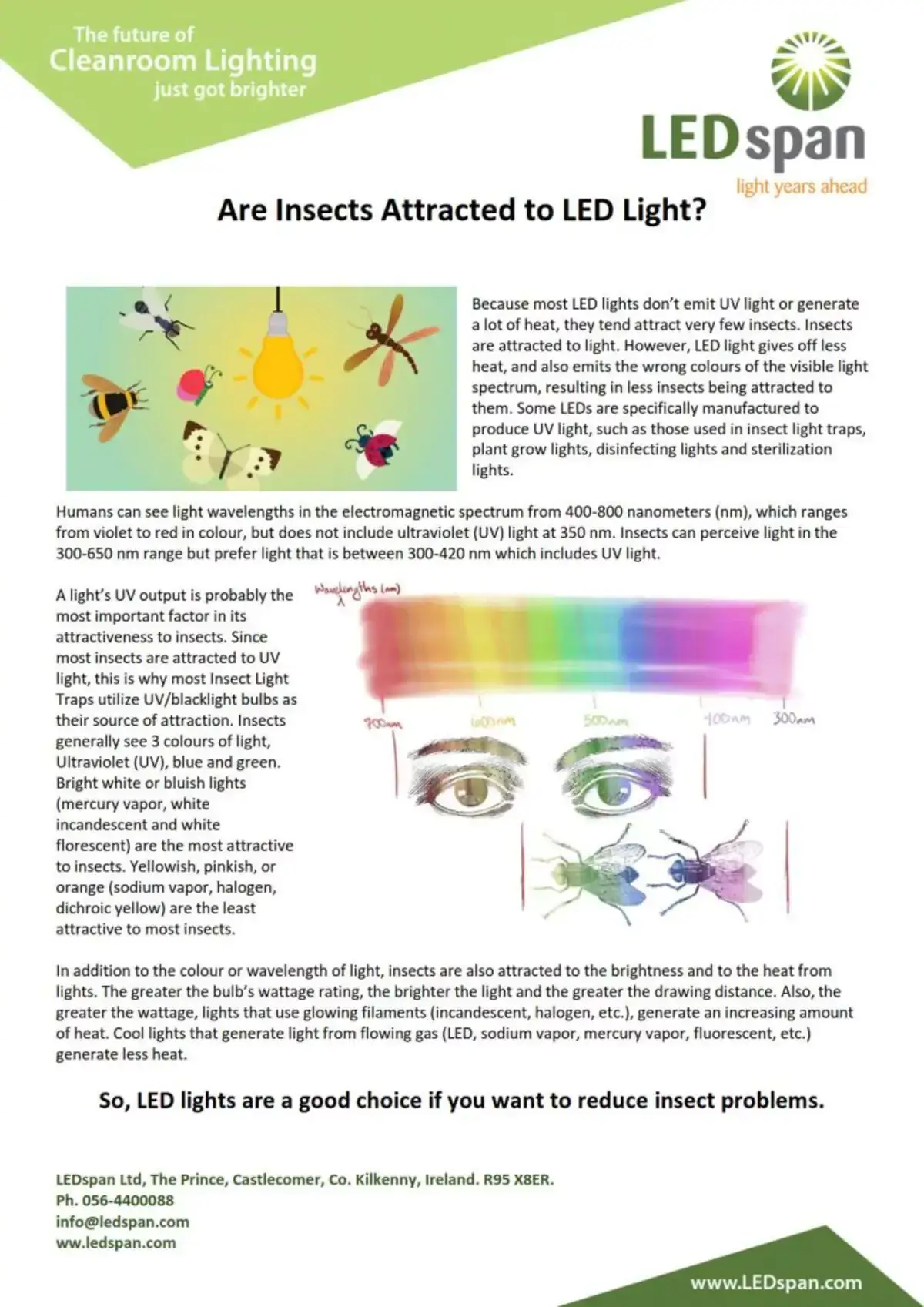Because most LED lights don’t emit UV light or generate a lot of heat, they tend attract very few insects. Insects are attracted to light. However, LED light gives off less heat, and also emits the wrong colours of the visible light spectrum, resulting in less insects being attracted to them. Some LEDs are specifically manufactured to produce UV light, such as those used in insect light traps, plant grow lights, disinfecting lights and sterilization lights. Humans can see light wavelengths in the electromagnetic spectrum from 400-800 nanometers (nm), which ranges from violet to red in colour, but does not include ultraviolet (UV) light at 350 nm. Insects can perceive light in the 300-650 nm range but prefer light that is between 300-420 nm which includes UV light. A light’s UV output is probably the Wawelengths lom) most important factor in its attractiveness to insects. Since most insects are attracted to UV light, this is why most Insect Light Traps utilize UV/blacklight bulbs as their source of attraction. Insects 700 LOOM 500 HODAM 300am generally see 3 colours of light, Ultraviolet (UV), blue and green. Bright white or bluish lights (mercury vapor, white incandescent and white florescent) are the most attractive to insects. Yellowish, pinkish, or orange (sodium vapor, halogen, dichroic yellow) are the least attractive to most insects.
In addition to the colour or wavelength of light, insects are also attracted to the brightness and to the heat from lights. The greater the bulb’s wattage rating, the brighter the light and the greater the drawing distance. Also, the
greater the wattage, lights that use glowing filaments (incandescent, halogen, etc.), generate an increasing amount
of heat. Cool lights that generate light from flowing gas (LED, sodium vapor, mercury vapor, fluorescent, etc.)
generate less heat.
So, LED lights are a good choice if you want to reduce insect problems.Do you have a problem with insects? We have the solution for you!
Please feel free to contact us at +353 (0)56 4400088/ [email protected] for more information.

